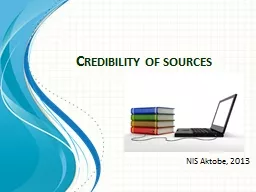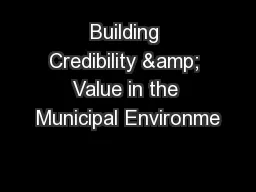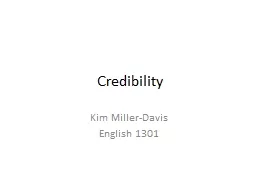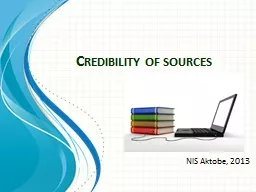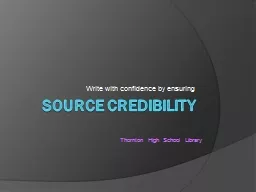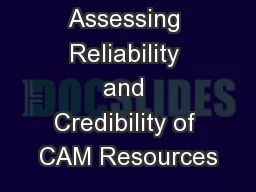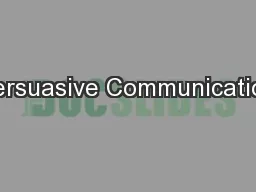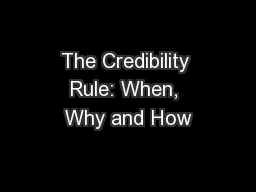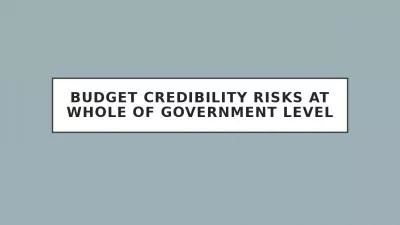PPT-Credibility of sources
Author : lois-ondreau | Published Date : 2016-05-19
NIS Aktobe 2013 Criteria of credibility RAVEN Expertise does the source have specialised knowledge and does the situation demand it Neutrality is the source predisposed
Presentation Embed Code
Download Presentation
Download Presentation The PPT/PDF document "Credibility of sources" is the property of its rightful owner. Permission is granted to download and print the materials on this website for personal, non-commercial use only, and to display it on your personal computer provided you do not modify the materials and that you retain all copyright notices contained in the materials. By downloading content from our website, you accept the terms of this agreement.
Credibility of sources: Transcript
Download Rules Of Document
"Credibility of sources"The content belongs to its owner. You may download and print it for personal use, without modification, and keep all copyright notices. By downloading, you agree to these terms.
Related Documents

